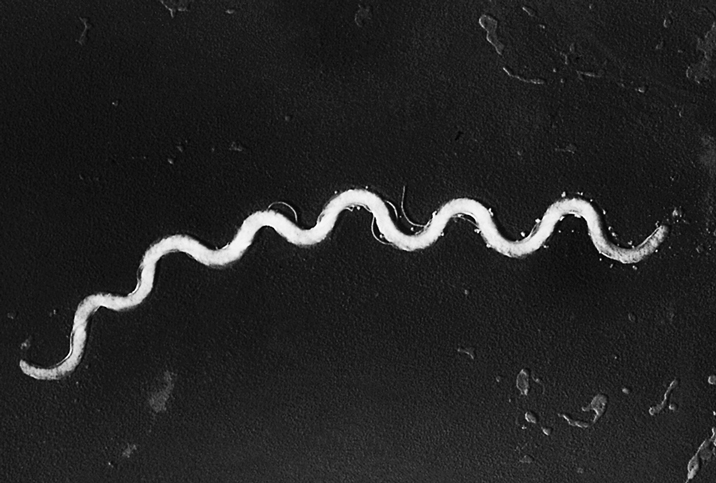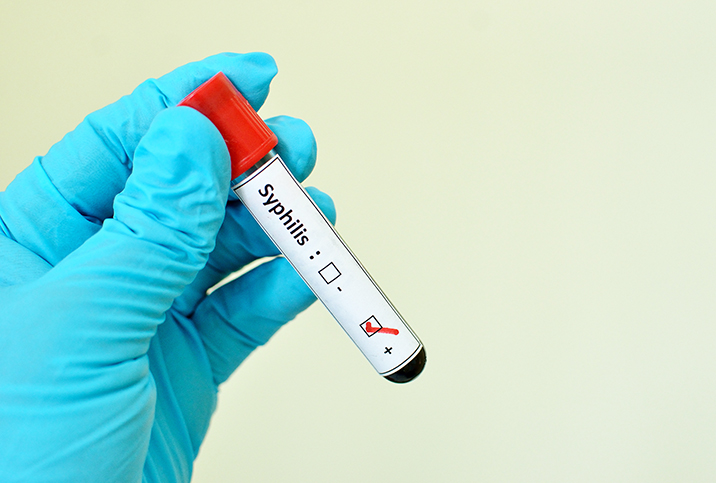Under the Microscope: Why Dark-Field Microscopy Is No Longer Used to Detect Syphilis

If untreated, the sexually transmitted disease syphilis can lead to severe health issues such as blindness, mental health disorders and damage to the brain, eyes and heart. The bacteria Treponema pallidum causes syphilis, and it's highly contagious, especially in the early stages.
Syphilis is typically spread when an infected person has vaginal, oral or anal sex with someone, although a pregnant woman with syphilis can pass it on to her baby during gestation and childbirth.
You cannot, however, contract syphilis by touching objects that have been touched by an infected person.
In the beginning, there was dark-field microscopy
In 1906, immunologist Karl Landsteiner, along with colleague Viktor Mucha, introduced dark-field microscopy as a means of detecting the presence of syphilitic treponemes (spiral-shaped bacteria) in infected specimens. Dark-field microscopy involves obtaining a scraping of the sore, placing it on a slide and examining it with a dark-field microscope.
Dark-field microscopy is essentially a technique that allows a specimen to be seen illuminated but the background around it is dark. In this way, the specimen you want to examine can be seen in high contrast and high resolution.
This development was a huge breakthrough in laboratory testing for syphilis. But it ultimately proved to have significant limitations, which is why doctors have largely stopped using it.
What are the disadvantages of dark-field microscopy?
Dark-field microscopy is technically demanding. Recognizing microscopic bacteria is challenging, especially when small numbers are present. False-positive results have frequently occurred with dark-field microscopy and factor in the reluctance to have confidence in research carried out using this technique.
Detection via microscopy works fairly well in primary syphilis as high numbers of treponemes are often visible in tissue specimens from the chancre, a sore that develops on the genitals as a result of syphilis. However, the dark-field sensitivity declines as the infection progresses and can decrease significantly if the patient has been treated with antibiotics.
Dark-field microscopy cannot be used to visualize treponemes in specimens collected from the mouth. The mouth carries many species of nonpathogenic treponemes—those that don’t cause disease—that are structurally indistinguishable from Treponema pallidum, again leading to false-positive results that require more test for confirmation.
Dark-field microscopy is fairly technical and generally only useful to those with extensive experience. However, it’s worth noting dark-field microscopy may be useful in the later stage of syphilis when other tests are inconclusive, or in babies, who are often difficult to diagnose.
How is syphilis diagnosed?
If you see a doctor regarding concerns about having syphilis, they will likely conduct a physical exam. It may include a close inspection of your genitals and mouth to look for any rashes or abnormalities.
Your doctor will also ask questions such as:
- What are your symptoms?
- How do you think you may have been exposed to a sexually transmitted disease?
- Do you have sores in your genital area? Or anywhere else on your body?
- Did you have unprotected sex or have multiple sex partners?
These may seem invasive and personal questions, but this is vital information required by your doctor as they piece together an initial assessment of your condition.
There are two types of blood tests: nontreponemal and treponemal tests. Both are necessary to confirm a syphilis diagnosis. Nontreponemal tests are inexpensive and simple, and they are often used for screening. The established strategy to make an accurate syphilis diagnosis is to carry out the nontreponemal test first and then to confirm the positive result using the treponemal test.
Treponemal tests are used to detect syphilis-specific antibodies. Treponemal antibodies appear before nontreponemal antibodies and typically remain detectable for the rest of your life, even after treatment.
If the tests are carried out in the opposite order—treponemal first and then the nontreponemal test—it's known as reverse sequence testing, and this has advantages and disadvantages. One advantage is it is more likely to detect very early- and late-stage infections. A disadvantage in reverse sequence screening is it may lead to false-positive results, even if the person has been previously treated.
Get tested for syphilis
Getting tested for syphilis is really the only way to know if you have the disease.
If you or your partner show any signs or symptoms of syphilis or if you have had unprotected sex with someone you think might be infected, you should get tested as soon as possible. Detecting syphilis in its earliest form is the best way to be successfully treated.

















